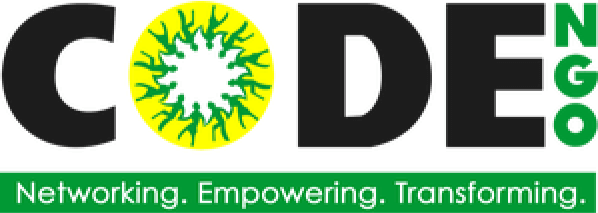“Isa talagang malaking sampal sa mukha namin yung disaster risk reduction and management (DRRM) dahil sa Yolanda.” (DRRM was really a huge slap in our face because of Yolanda.) Kuya Mifael, an area coordinator for Eastern Visayas Network (EVNet) remarks, reminiscing about his experience when typhoon Yolanda, one of the strongest typhoons in recorded history, hit his hometown of Eastern Visayas in November 2013.
Disaster preparedness was never really a priority for the people of Eastern Visayas, confessed some civil society (CSO) workers. And who could blame them? With the region being one of the poorest in the country, livelihood, housing, and education were more pressing concerns. Yet this time, the CSO community is determined to change this mindset with a revolution of their own; one that would put DRRM as a priority for every one – governments, families, and individuals alike.
DRRM and Citizen Participation
EVNet, a network of CSOs in Eastern Visayas, is at the frontline of this revolution. Pauline Lawsin-Nayra, Executive Director of EVNet, attests to the emerging importance of DRRM: “Because of Yolanda, we now also focus on DRRM, especially community-based DRRM. We realized that it is something every member of our network should do. We are urging members to implement projects such as this, in fact, ten of them have already begun.”
Early efforts for DRRM are building on the successes of EVNet’s previous efforts such as the Local Poverty Reduction Development Agenda (LPRDA). A participatory governance mechanism, the LPRDA brings together different sectors of the community, CSOs, and local government units (LGUs) in formulating a plan to reduce poverty in their area.
Before Yolanda, several area foci of the LPRDA include potable water, livelihood, and development planning. In the aftermath of the typhoon, however, CSOs are working to include DRRM in their municipality’s agenda. Kuya Rolly, a CSO leader in Hilongos, Leyte, points out the DRRM efforts in his community are still in its early phases: “Sinisingit na naming mga CSO ‘yang DRRM sa LPRDA, lalo na sa mga slope areas. Kailangan din mag-conduct ng mga palagiang meeting kung ano ang gagawin bago at pagkatapos ang sakuna. Marami kasing hindi alam ang gagawin sa barangay.” (CSOs are already including the DRRM in the LPRDA, especially in slope areas. There is also a need to conduct regular meetings on what to do before and after the calamity. A lot of people in the community still do not know what to do.) Similarly, Sta. Margarita, a municipality in Samar, is still in its preparatory stage. Ate Luz, an EVNet area coordinator, cites awareness among the community as a central problem. Many, including CSOs and LGUs, still lack knowledge on DRRM, let alone how to implement projects addressing such issues. Furthermore, lack of data from LGUs is also a pressing concern: “Isang problema rin dito sa Sta. Margarita ay ‘yung kawalan ng CLUP (Comprehensive Land Use Plan). Kahit na maipasok sa LPRDA ang DRRM, hindi rin maisasagawa nang maayos kasi walang evacuation plans.” (Another problem here in Sta. Margarita is the absence of a CLUP. Even if we manage to include DRRM in the LPRDA, we will not be able to implement it properly because there are no proper evacuation plans.) Efforts on CLUP creation for Sta. Margarita are already being put by CSOs and from there, DRRM projects could take off.
DRRM as a Family Concern
Participatory governance is not the only campaign employed by CSOs in promoting DRRM. EVNet member organization, Leyte Family Development Organization (LEFADO), an organization aimed to protect and cultivate the Filipino family, sees the youth and the family as instrumental actors in DRRM.
Betty Garido, founder of LEFADO, cites awareness as a central goal of their efforts: “Education talaga as a way to reduce risk.” (Education is really a way to reduce risk.) Moreover, she states that preparation is key, and should be done, not just at the community level, but at the primary level of the family: “Iplano niyo na bilang pamilya kung ano ang gagawin ‘pag may sakuna. Dapat may pag-uusap kung saan ang convergence point kung may bagyo.” (The family should plan what to do during a disaster. There should be a convergence point if ever there is a storm.) With these beliefs at the core of their DRRM program, their projects include awareness lectures on storms, tsunamis, and storm surges, as well as workshops on disaster preparedness, such as disaster kit preparation, and evacuation scheme planning.
Another aspect of their campaign is geared towards environmental protection. Betty urges everyone to ask themselves: “Ano as an individual and as a family ang magagawa ko para sa kalikasan?” (What can I, as an individual and as a member of my family, do for the environment?) With this, LEFADO also educates young people and families alike about planting and cutting trees, and the implications of these on the environment.
The Revolution Begins
DRRM is still a foreign concept to many, and it may take a lot of time before it is institutionalized and normalized as a part of people’s lives. Despite that, these efforts by EVNet and LEFADO bring about bright sparks of change in Eastern Visayas.
And as Katniss Everdeen puts it, “Every revolution begins with a spark.”
Trixie graduated with a degree in Bachelor of Arts in Political Science at the University of the Philippines-Diliman. She likes literature, movies, music, and writing.
